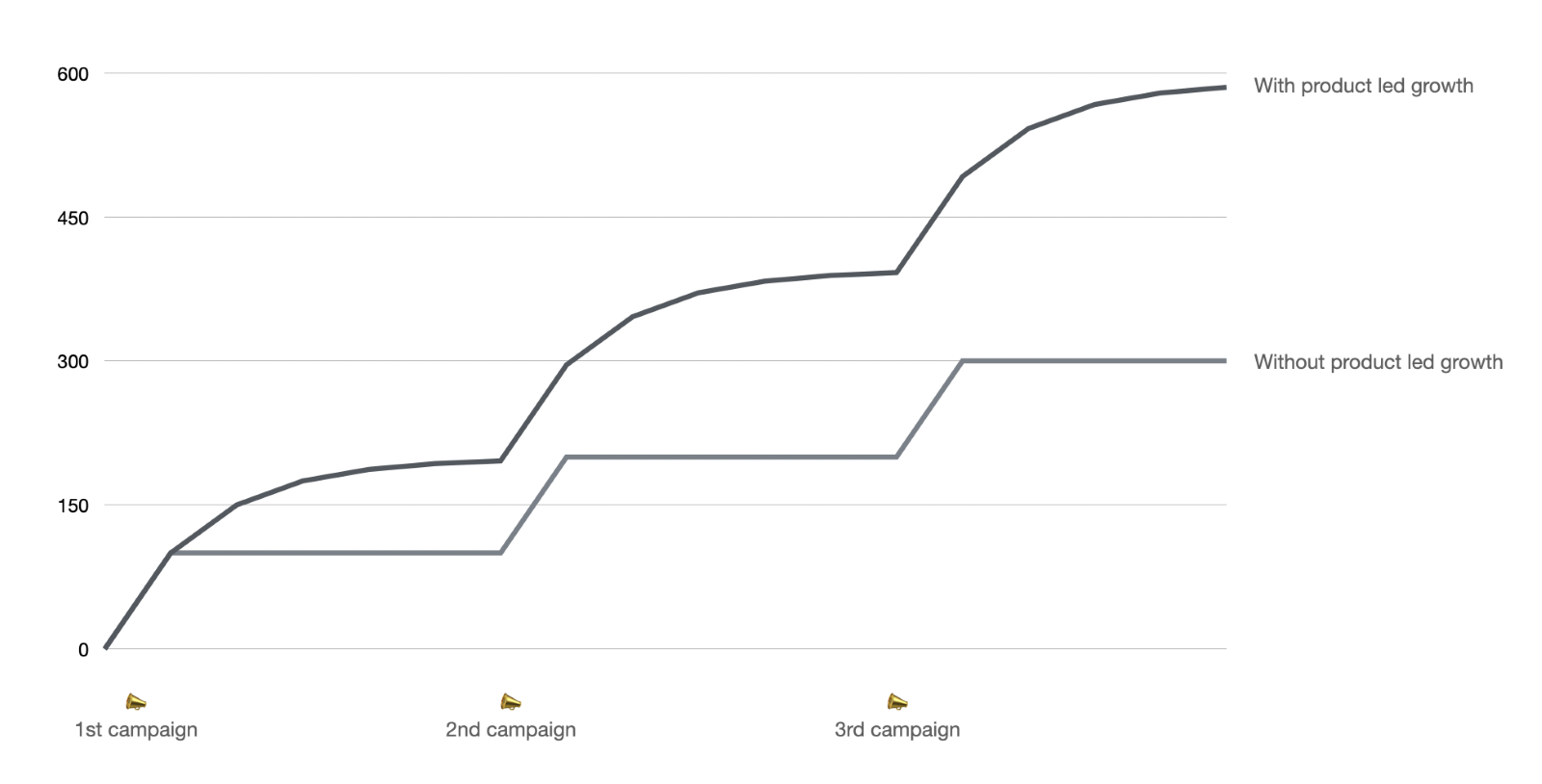Alette Holmberg-Nielsen | 17/06/2021
3 tactics for product led growth
Earlier this year, we wrote about three things product managers need to succeed in 2021: Purpose, wartime, and product led growth. Now, let’s take a closer look at what could drive product led growth for a SaaS company serving SMEs.
Product as a growth lever
The way product led growth works is quite simple. Imagine a campaign brings you 100 new customers. What you need to figure out is this:
How do you get as many of those 100 customers to bring in new customers for you?
Let’s imagine that you find that magic mechanism that makes half of the customers you acquire bring in 1 new customer each. The first campaign gets you from 0 to 100 customers. Those 100 customers bring in 50 new customers, who in turn bring in 25 new customers etc.
This mechanism means that from the first campaign you get around 196 new customers in total— almost double what the initial marketing push brought. As you see, the patterns keep repeating for each campaign.

Product led growth leads to customers bringing in more customers.
Of course, your mileage may vary and it’s very possible that your scenario is completely different than that of the above graph. Maybe you get 10% of the customers to bring in 2 new customers each. But the mechanism stays the same; a product driving growth serves as a multiplier to your marketing efforts.
3 ways to drive product led growth
For most, it’s far from simple to figure out a magical mechanism for product led growth. Here are a few multi-purpose ideas that may be useful in your line of business.
Reward sharing with a better product
Dropbox is famous for achieving product led growth by offering its customers additional storage for each customer they bring in.
The Dropbox referral program enables users to increase their storage with an additional 500 megabytes for each friend they invited. And in 2017, Dropbox announced that it had reached $1 billion in revenue — faster than any other SaaS company at the time. It’s fair to say that the product led growth strategy paid off.

Dropbox’s referral program landing page
To repeat the success Dropbox saw from rewarding sharing with a better product, the problem you’re solving should be easy to scale. Storage is very easy to understand and most people will need more than the 2GB for free as time progresses and thus people will keep having an incentive to want more storage and thus share.
Easy to scale benefits could be interruption-free streaming, access to premium features, or access to reporting and insights.
Collaboration
Another way to drive product led growth is by enabling collaboration on your platform. By sheer nature, collaboration tools require users to invite their colleagues, customers, network, friends, and the like to get the full value of your product. A few examples of tools enabling collaboration could be Google Workspace (Drive, Docs, Sheets, Forms, etc.), Miro or GitHub where millions of developers build, ship, and maintain their software.

Miro’s collaborative workshopping tools engage multiple users at once.
If you think about it, most things require collaboration. Accounting software, marketing technology, website builders, you name it. They all require people in different roles to collaborate. The need for collaboration or sharing of work are opportunities for collaboration and thus product led growth.
Tupperware: Target businesses with customers themselves
A third way to drive product led growth would be to choose a target audience that themselves target someone with a need for your product.

If you are working in the B2B SaaS space, you can adopt this idea and think of targets in segments that themselves have customers in need of your solution. If your company makes accounting software, you might want to get accounting companies to adopt your solution. Likewise, if you’re building marketing technology, a good place to start would be to target marketing professionals as your first vertical.
If you are looking for ideas for verticals to target, the growing workforce of freelancers might be just what you are looking for. In a recent study of freelancers, Localogy and Mono Solutions found that 62% say they recommend software solutions to their clients, notably websites (35%), accounting (27%), and marketing (25%).
For more statistics like this, you can get the full report here.
About the author
Alette Holmberg-Nielsen is Product Director at Mono Solutions, where she helps teams, product managers and designers ship stellar products and build product culture that eats strategy for breakfast.
